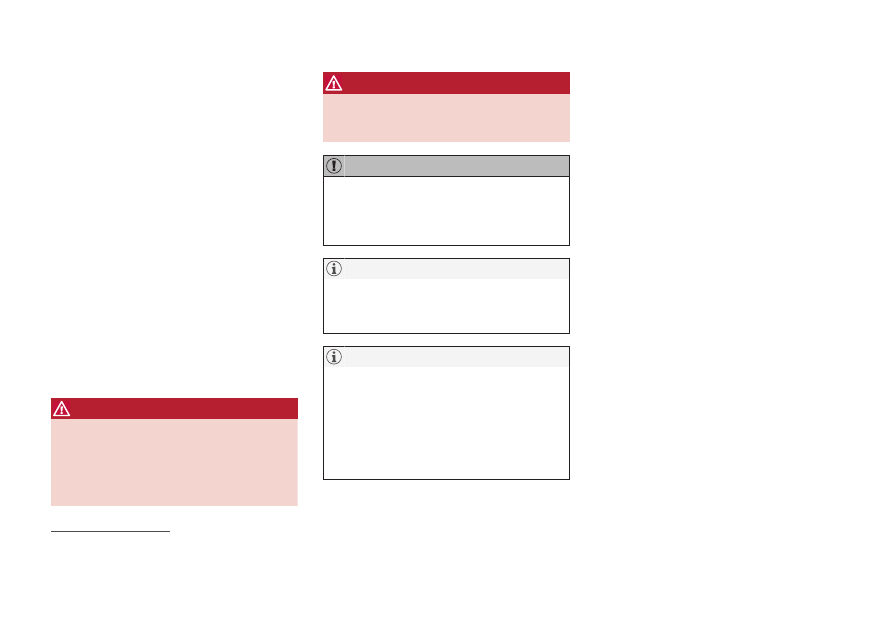Volvo S60 Cross Country (2018 year). Manual - part 21

MAINTENANCE AND SERVICE
360
Lamp replacement - general
Several of the car's bulbs can be replaced by
the driver. For replacement of LED lamps and
xenon lamps, please contact a workshop.
The bulbs are specified (p. 367). The following
list contains locations of bulbs and other light
sources that are specialised, such as LED
6
lamps, or are unsuitable for changing for some
other reason, except at a workshop
7
:
•
active xenon headlamps - ABL (xenon lamps)
•
daytime running lights/position lamps, front
•
cornering lights
•
side direction indicators, door mirrors
•
approach lighting, door mirrors
•
interior lighting apart from Courtesy lighting
front
•
position lamps, rear
•
side marker lamps.
WARNING
On cars with xenon headlamps, the replace-
ment of xenon lamps must be carried out at a
workshop - an authorised Volvo workshop is
recommended. Working with xenon lamps
demands extreme caution because the head-
lamp is equipped with a high voltage unit.
WARNING
The car's electrical system must be in key
position 0 for bulb replacement; see Key posi-
tions - functions at different levels (p. 77).
Never touch the glass part of the bulbs with
your fingers. Grease from your fingers is
vaporised by the heat, coating the reflector
and then causing damage.
If an error message remains after the broken
bulb has been replaced then we recommend
visiting an authorised Volvo workshop.
Outside lighting such as headlamps and rear
lamps may temporarily have condensation on
the inside of the lens. This is normal, all exte-
rior lighting is designed to withstand this.
Condensation is normally vented out of the
lamp housing when the lamp has been
switched on for a time.
Related information
•
Lamp replacement - headlamps (p. 361)
•
Lamp replacement - location of rear lamps
(p. 365)
•
Lamp replacement - vanity mirror lighting
(p. 366)
•
Lamp replacement - lighting in cargo area
(p. 366)
•
Lamp replacement - number plate lighting
(p. 366)
6
LED (Light Emitting Diode)
7
An authorised Volvo workshop is recommended.